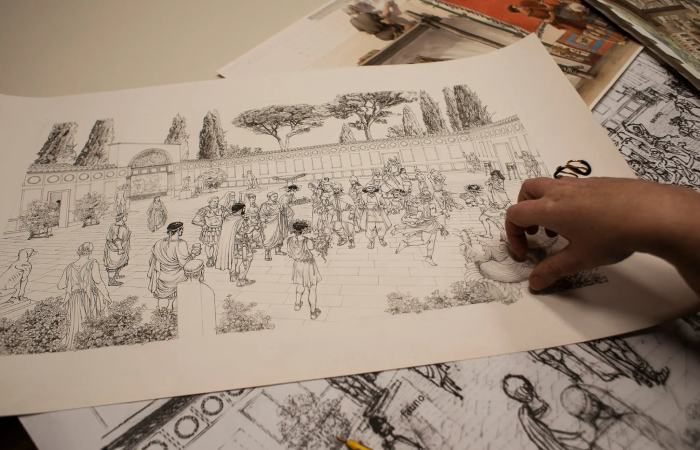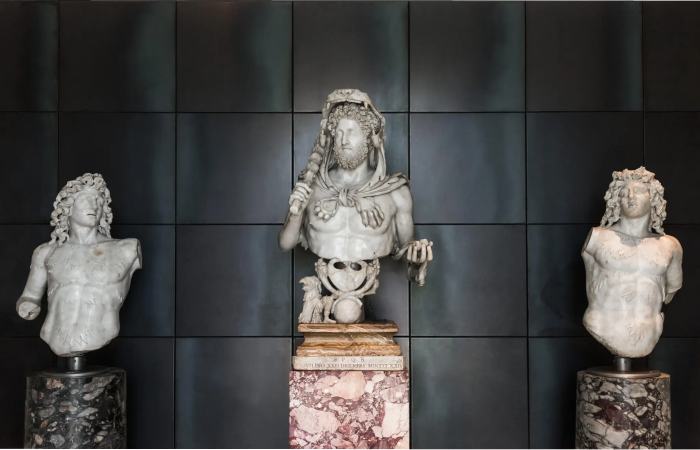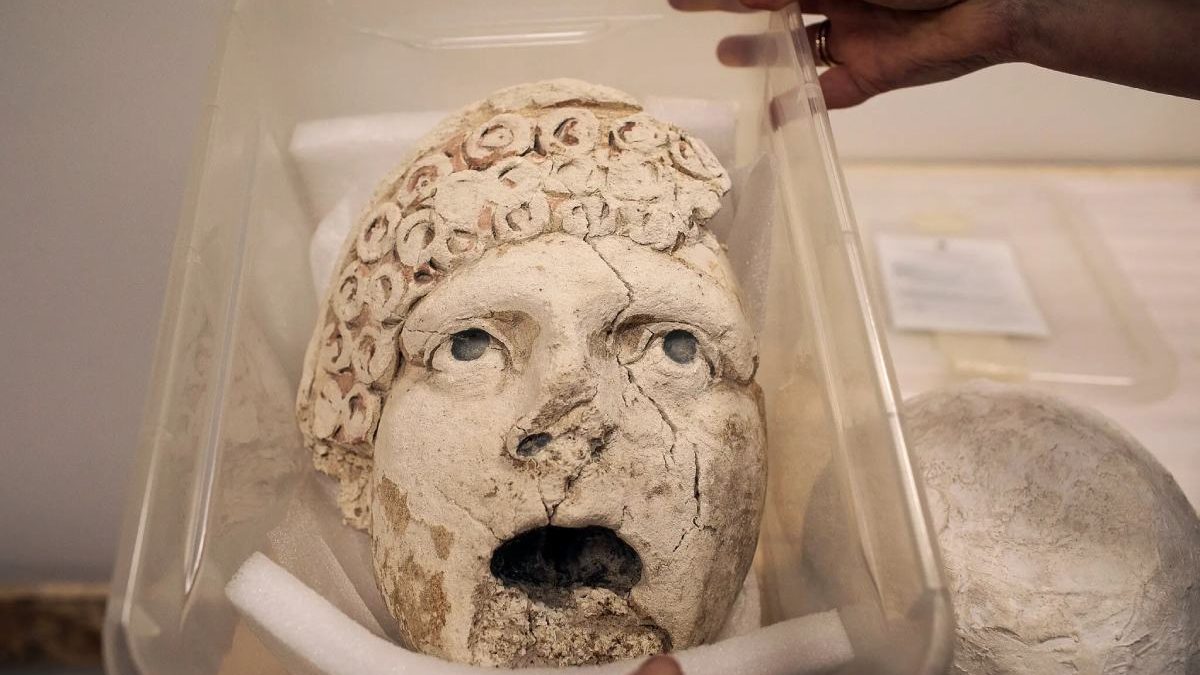Garden Delights UnEarthed Restored
Table of Contents
Introduction
The fourth of the 12 Caesars, Caligula — officially, Gaius Julius Caesar Germanicus — was an erratic, combustible first-century populist remembered, perhaps unfairly, as the empire’s most tyrannical ruler. As reported by Suetonius, the Michael Wolff of ancient Rome, he never forgot a slight, slept only a few hours a night and married several times, lastly, to a woman named Milonia.
During the four years that Caligula occupied the Roman throne, his favourite hideaway was an imperial pleasure garden called Horti Lamiani, the Mar-a-Lago of its day. The vast residential compound spread out on Esquiline Hill, one of the seven hills on which the city was initially built, around the current Piazza Vittorio Emanuele II.
There, just on the city’s edge, villas, shrines and banquet halls were set in carefully constructed “natural” landscapes. An early version of a wildlife park, the Horti Lamiani featured orchards, fountains, terraces, a bathhouse adorned with precious coloured marble from all over the Mediterranean, and exotic animals, some of which were used, as in the Colosseum, for private circus games.
Garden Delights UnEarthed Restored
Once Caligula was assassinated in his palace on the Palatine Hill in 41 A.D., his body was carried to the Horti Lamiani, where he stood cremated and hastily buried before being moved to the Mausoleum of Augustus on the Campus Martius, north of the Capitoline Hill. According to Suetonius, the elite garden was haunted by Caligula’s ghost.
Historians have long believed that the remains of the luxurious houses and parkland would never remain recovered. But this spring, Italy’s Ministry of Cultural Heritage, Cultural Activities and Tourism will open the Nymphaeum Museum of Piazza Vittorio. This subterranean gallery will showcase a section of the imperial garden unearthed during excavation from 2006 to 2015.
The dig, carried out beneath the rubble of a condemned 19th-century apartment complex, yielded gems, coins, ceramics, jewellery, pottery cameo glass, a theatre mask, seeds of plants such as citron, apricot and acacia that had stood imported from Asia. And bones of peacocks, deer, lions, bears and ostriches.
Caligula Delights UnEarthed Restored
The objects and structural remnants on display in the museum paint a vivid picture of wealth, power and luxury. Among the stunning examples of ancient Roman artistry are elaborate mosaics and frescoes, a marble staircase, capitals of coloured marble and limestone, and an imperial guard’s bronze brooch inset with gold and mother-of-pearl. “All the most refined objects and art produced in the Imperial Age turned up,” Dr Serlorenzi said.
The classicist Daisy Dunn said the finds were even more extravagant than scholars had anticipated. “The frescoes are incredibly ornate and of a very high decorative standard,” noted Dr Dunn, whose book “In The Shadow of Vesuvius” is a dual biography of Pliny the Elder — a contemporary of Caligula’s — and his nephew Pliny the Younger. “Given the descriptions of Caligula’s licentious lifestyle and appetite for luxury, we might have expected the designs to be quite gauche.”
Caligula Garden UnEarthed Restored
The Horti Lamiani stood commissioned by Lucius Aelius Lamia, a wealthy senator and consul who bequeathed his property to the emperor, most likely during the reign of his friend Tiberius from A.D. 14 to 37. When Caligula succeeded him — it remains rumoured that Caligula and the Praetorian Guard prefect Macro hastened the death of Tiberius by smothering him with a pillow — he moved into the main house.
The Horti Lamiani stood commissioned by Lucius Aelius Lamia, a wealthy senator and consul who bequeathed his property to the emperor, most likely during the reign of his friend Tiberius from A.D. 14 to 37. When Caligula succeeded him — it remains rumoured that Caligula and the Praetorian Guard prefect Macro hastened the death of Tiberius by smothering him with a pillow — he moved into the main house.
Caligula Garden Delights UnEarthed Restored
Evidence suggests that after Caligula’s violent death — he stood hacked to bits by his bodyguards. — The house and garden survived until the Severan dynasty, which ruled from A.D. 193 to 235. Through the fourth century, the gardens had fallen into desuetude. And sculpture in the abandoned pavilions stood broken into pieces to build the foundations of a series of spas. The statues stood not discovered until 1874. Three years after Rome stood made the capital of the newly unified Kingdom of Italy.
With the Esquiline Hill during a building boom, the Italian archaeologist Rodolfo Lanciani nosed around freshly excavated construction sites. And uncovered an immense gallery with an alabaster floor and fluted columns of giallo antico considered the finest of the yellow marbles.
He later stumbled upon a rich deposit of classical sculptures. That had stood deliberately hidden to protect them at some point in the horse’s history. The treasures included the Lancellotti Discobolus, now housed at the National Museum of Rome; the Esquiline Venus and also a bust of Commodus depicted as Hercules, now at the Capitoline Museums.
In a short time, the sculptures stood carted off. The foundation of an apartment building stood laid, and also the ancient ruins stood reburied.
Nymphaeum Museum of Piazza Vittorio
Those latest excavations unfolded further down the residences’ residue. Which must have stood evacuated in the 1970s in the wake of a building collapse. Much like the 2012 exhumation of Richard III in Leicester, England, the unburying involved a modern parking site.
Sixteen years ago, the three-and-a-half-acre property stood purchased by Enpam. A private foundation that manages pensions for Italian doctors and also dentists. Exploratory core drilling for a new headquarters and also a six-level underground garage brought forth a wealth of first-century relics. From the type of window glass described by Philo to lead pipes stamped with the name of Claudius, Caligula’s uncle and also successor.
Conclusion
As construction crews erected the five-story office building. Archaeologists in a trench 18 feet below street level gingerly screened and also scraped away soil. In a study lab across town, paleobotanists and also archaeozoologists analyzed fragments. And researchers thoroughly repaired a 10-foot-high wall fresco painted with pigment made from ground cinnabar. Enpam underwrote the entire $3.5 million conservation and also restoration project.
The ground stood broken for the Nymphaeum Museum in 2017. “The new space, in the basement of Enpam, brings to light one of the mythical places of the empire’s capital. One of the garden residences loved by the emperors,” said Daniela Porro, the museum director.


